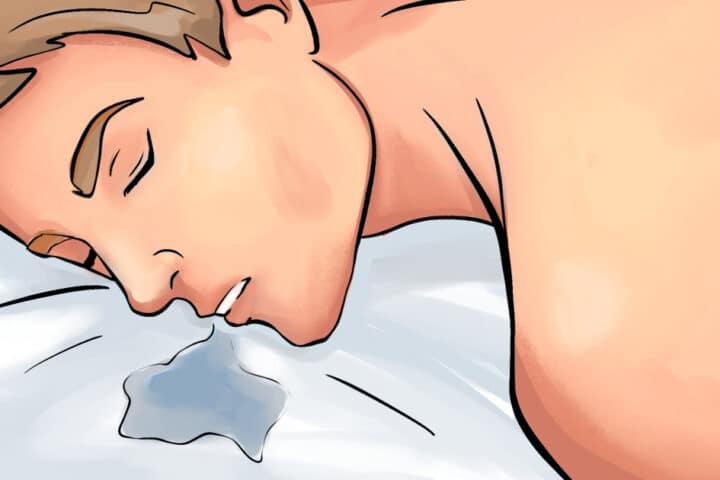Pain is an inevitable part of life, and at times, we encounter situations that push us beyond our limits. Whether it’s physical discomfort from intense workouts, medical procedures, or even emotional distress, having a higher pain tolerance can make a significant difference in our overall well-being.
The good news is that pain tolerance is not fixed; it can be improved with practice and certain techniques. Here are some proven methods to help you increase your pain tolerance and overcome challenging situations with resilience.
1. Deep Breathing and Meditation
Deep breathing techniques and meditation have long been recognized for their ability to calm the mind and enhance relaxation.
When faced with pain, focusing on slow, deep breaths can help you shift your attention away from the discomfort, promoting a sense of control and reducing anxiety.
2. Gradual Exposure to Pain
Gradual exposure involves progressively increasing your exposure to pain or discomfort over time.
By slowly acclimating yourself to uncomfortable situations, you can build resilience and improve your pain tolerance gradually.
3. Cold Water Immersion
Taking cold showers or plunging into icy water, has been shown to increase pain tolerance.
It stimulates the release of endorphins, which are natural painkillers, and activates the body’s natural stress response, enhancing your ability to tolerate discomfort.
4. Visualization Techniques
Visualization involves mentally picturing yourself in a calm and serene environment. When facing pain, visualizing yourself in a peaceful setting can help divert your attention from the discomfort and provide a sense of relief.
5. Physical Exercise
Engaging in regular physical exercise not only improves overall fitness but also boosts pain tolerance.
Exercise releases endorphins, promotes better circulation, and strengthens the body, all of which contribute to a higher pain threshold.
6. Mental Distraction
Redirecting your focus away from pain can be an effective strategy to increase your pain tolerance.
Engage in activities that require mental concentration, such as solving puzzles, reading captivating books, or playing challenging games.
7. Heat Therapy
Heat therapy, such as using heating pads or warm baths, can help relax muscles, relieve tension, and alleviate pain.
The application of heat stimulates blood flow, promotes relaxation, and reduces sensitivity to pain.
8. Positive Affirmations
Positive affirmations involve repeating positive statements to yourself. By replacing negative thoughts with uplifting and empowering affirmations, you can shift your mindset and develop a more optimistic outlook, ultimately increasing your pain tolerance.
9. Music Therapy
Music has a profound impact on our emotions and can distract us from pain. Listening to soothing or upbeat music can help elevate mood, reduce stress, and decrease pain perception, thereby increasing pain tolerance.
10. Acupuncture
Acupuncture, an ancient Chinese practice, involves inserting thin needles into specific points on the body. This technique stimulates the release of endorphins, improves blood circulation, and modulates pain signals, aiding in pain management.
11. Mindfulness-Based Stress Reduction
Mindfulness-based stress reduction (MBSR) involves cultivating awareness of the present moment without judgment. By practicing mindfulness, you can develop a non-reactive attitude toward pain and increase your ability to tolerate discomfort.
12. Cold Compress
Applying a cold compress to the affected area can help numb the pain and reduce inflammation. It works by constricting blood vessels and numbing nerve endings, providing temporary relief and boosting your pain tolerance.
13. Hypnosis and Guided Imagery
Hypnosis and guided imagery involve entering a relaxed state of focus and concentration. Through suggestions or visualizations provided by a trained professional, you can alter your perception of pain and increase your ability to endure it.
14. Laughter Therapy
Laughter has been scientifically proven to release endorphins, reduce stress, and boost mood. Engaging in activities that elicit genuine laughter, such as watching comedies or spending time with funny friends, can help raise your pain threshold.
15. Cognitive Behavioral Therapy
Cognitive-behavioral therapy (CBT) focuses on identifying and changing negative thought patterns and behaviors. By addressing and reframing your thoughts about pain, you can develop healthier coping strategies and increase your pain tolerance.
16. Herbal Remedies
Certain herbal remedies, such as turmeric, ginger, and willow bark, have natural analgesic properties and can help alleviate pain. Consult with a healthcare professional to determine the right herbal supplements for your specific needs.
17. Regular Massage
Massage therapy not only promotes relaxation but also releases endorphins, eases muscle tension, and improves blood circulation. Regular massages can help desensitize the body to pain and increase your overall pain tolerance.
18. Biofeedback Training
Biofeedback training involves using electronic sensors to monitor and provide feedback about your physiological responses, such as heart rate and muscle tension. By learning to control these bodily functions, you can develop greater control over your pain responses.
Bottom Line
Increasing pain tolerance is a process that requires time, practice, and a multidimensional approach. By incorporating these methods, you can cultivate resilience, increase your ability to manage pain tolerance, and improve your overall well-being.
Remember that each person’s pain threshold is unique, and it’s essential to listen to your body and seek professional guidance when necessary. Embrace these strategies, stay consistent, and empower yourself to face challenging situations with newfound strength and endurance.






